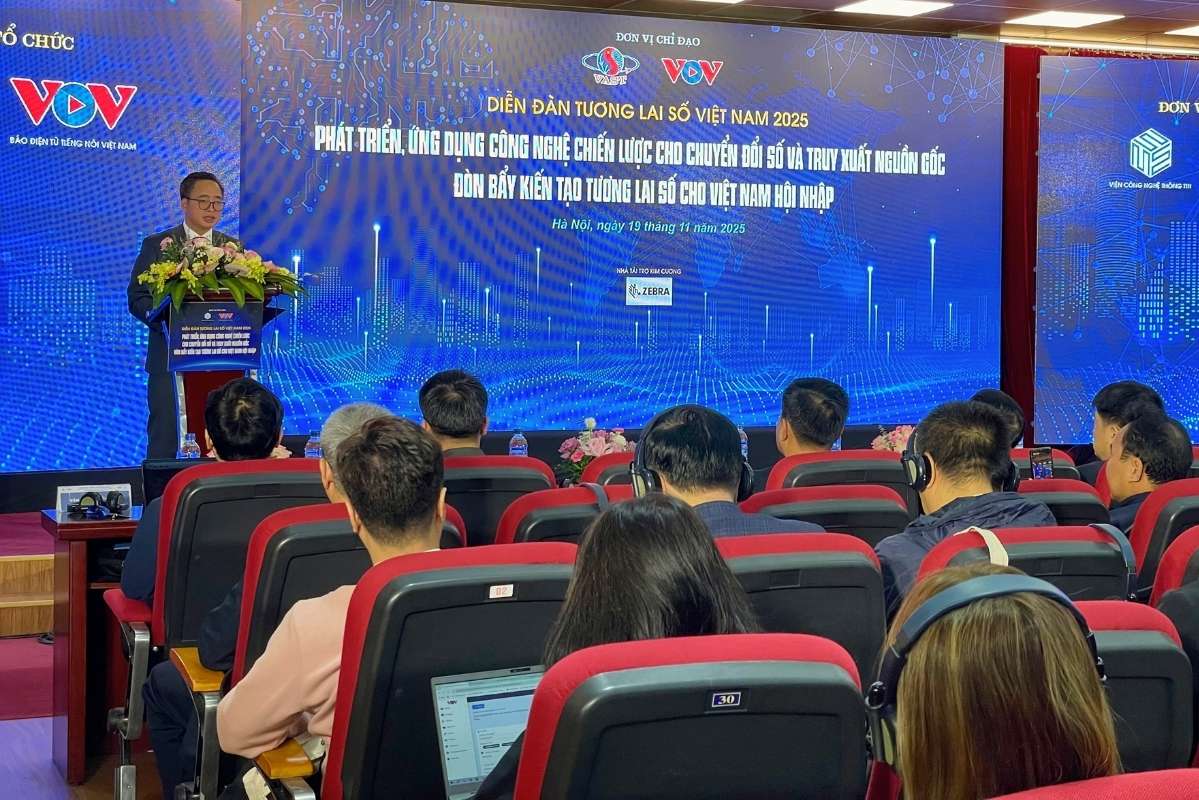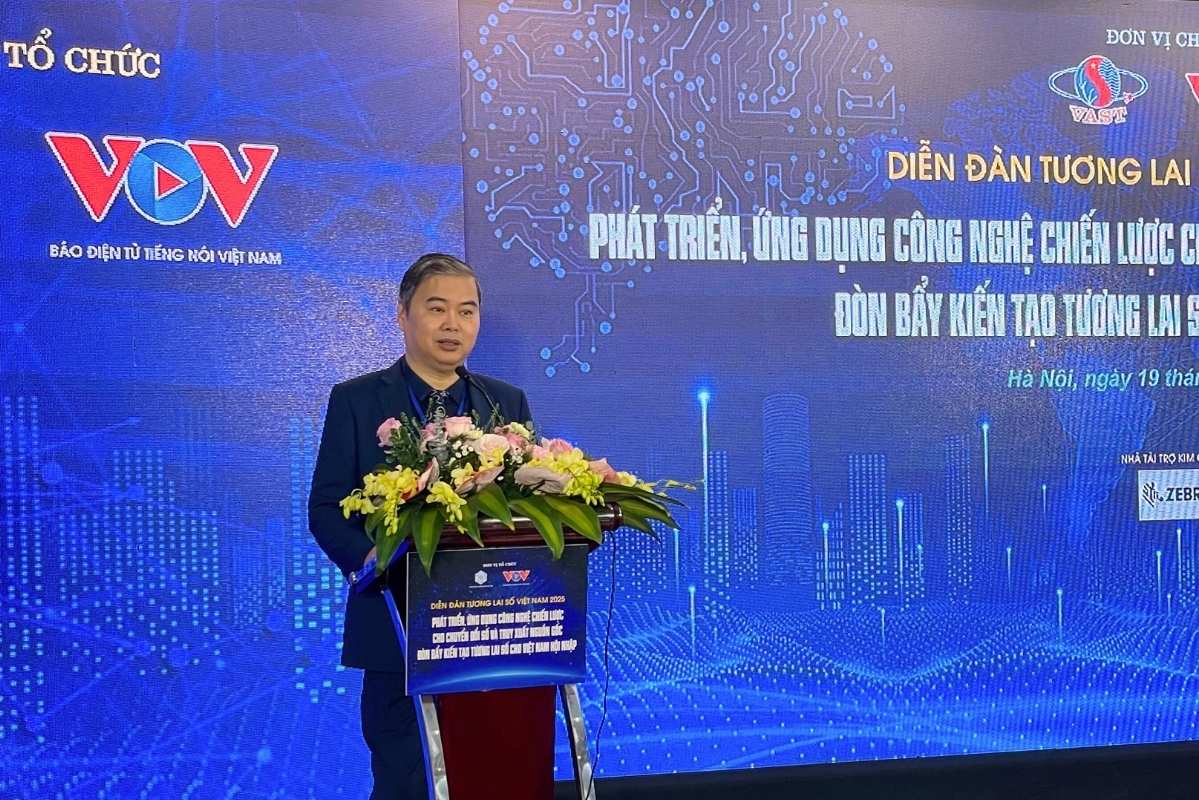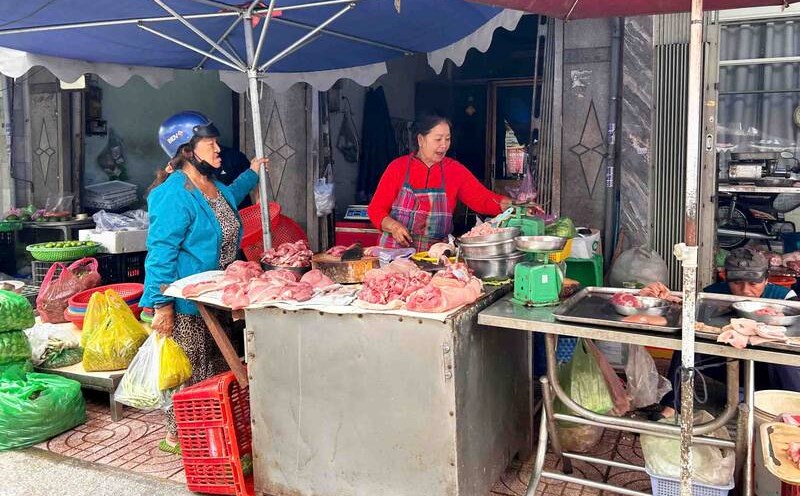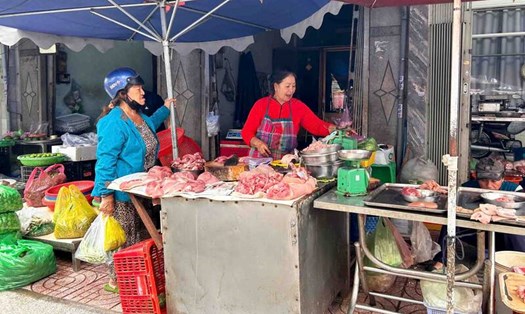Key role in tracing the origin of goods
On November 19, the Vietnam Digital Future Forum 2025 with the theme "Developing and applying strategic technology for digital transformation and traceability - Leverage to create a digital future for Vietnam to integrate" was organized by the Voice of Vietnam Electronic Newspaper (VOV) and the Institute of Information Technology (Vietnam Academy of Science and Technology) with the aim of spreading the spirit of innovation and promoting the application of technology in all areas of life.
Speaking at the opening of the forum, Mr. Pham Manh Hung - Deputy General Director of the Voice of Vietnam emphasized: "Resolution No. 57-NQ/TW on breakthroughs in science - technology development, innovation and national digital transformation is considered the golden key to help ministries, branches and localities promote the construction of national data infrastructure, develop "Made in Vietnam" digital platforms, promote AI, production and trade management, and at the same time, strongly innovate mechanisms and policies to facilitate comprehensive digital transformation".

In particular, Mr. Pham Manh Hung affirmed that the field of traceability using digital technology plays a key role, not only helping to make the supply chain transparent, protect consumers but also enhancing the quality value and competitiveness of Vietnam in the domestic and international markets.
Databases are not connected, forming separate "digital oases"
Assessing the traceability activities in Vietnam, Mr. Nguyen Duc Le - Department of Domestic Market Management and Development, Ministry of Industry and Trade commented: "Although the GS1 code has been applied, it is not yet synchronous. The Prime Minister issued Decision No. 100/QD-TTg dated January 19, 2019 approving the Project on deploying, applying and managing the traceability system.
However, currently, some businesses have applied GS1 standards, but some businesses operate according to separate standards, not ensuring uniqueness in goods traceability. Thus, the application of GS1 code is not synchronized, leading to the supply chain having too many languages to "talk" with each other" - Mr. Le pointed out the problem.
According to Mr. Le, the "disorder" of language leads to difficulties in switching to a national system, converting, data entry and ensuring the uniqueness of product identification.

In addition, a representative of the Department of Domestic Market Management and Development, Ministry of Industry and Trade acknowledged that the current level of digitalization is still disjointed. For some businesses that are required to implement traceability or large businesses that have been implemented this activity, while many small businesses or domestic markets have not put this factor first.
The data traced is segmented, not connected, forming a "digital oasis", the data is not circulating, causing difficulties for management. When the level of digitalization is disjointed, businesses can forge the origin, easily copying traceability.
Looking at reality, Mr. Nguyen Duc Le said that the main source traceability tool is static QR, so information cannot be tracked and can be easily copied. In addition, many products also apply line codes, which make warehouse inspection more convenient but not beneficial in traceability.
"New technologies in blockchain and digital signatures are having difficulty in applying to static QR codes, we need to encourage businesses to use traditional traditional Chinese Chinese chip and dynamic QR codes to enhance security and prevent counterfeit goods. Static QR codes are easy to copy, causing this product to be compared to another product, making data fake, and traceability is useless" - Mr. Le frankly shared.











